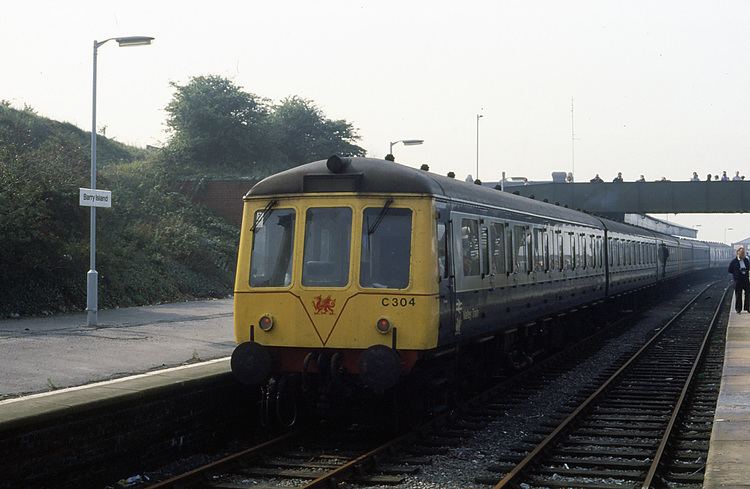In service 1961–1990 Constructed 1957–1961 | Manufacturer BR Derby | |
 | ||
Number built DMBS: 108
DMS: 108
TC: 94 Formation 2 or 3 cars per trainset Capacity DMBS: 85 second
DMS: 95 second
TC: 28 first, 74 second | ||
The British Rail Class 116 diesel multiple units were built by BR Derby from 1957 to 1961.
Contents
Background and design
These units were originally ordered for use on suburban and local services in the Birmingham area, but many found their way to other areas such as South Wales.
The class were similar in design to the Class 114, but were fitted out as high density sets, built for short distance, high capacity services, and so were built without gangways or toilets, although gangways were later fitted on some units. They were originally capable of accommodating 262 passengers.
Regular use
These units stayed in regular service until 1990, when they began to be withdrawn from traffic. They were replaced on regional services by the new "Sprinter" derivative units, or by Class 323 electric multiple units on services around Birmingham. The final units lasted in traffic until 1995, although a few saw further use in departmental service, as sandite or route-learner units. Several of this class have been saved for preservation.
Parcels use
Three units were converted to carry parcels traffic and reclassified as Class 130, though the individual coaches were not renumbered. The units involved were:
To provide extra capacity, they worked with modified General Utility Vans (GUV) as centre trailers.
Preservation
5 vehicles have been preserved on heritage railways.
